Demand for latex bedding grows as consumers appreciate the component’s natural origins and dip their toes into the category with accessories like pillows
As the quest for better sleep leads an increasing number of consumers to invest in better bedding, latex producers are preparing for a new wave of growth.
To meet this rising demand, companies are stepping up their product development efforts and creating new formulations and constructions with enhanced features, such as advanced zoning and performance additives. At the same time, they are broadening their lineups to include more accessories, such as pillows, and adding production capacity and warehousing space to increase their ability to satisfy customers’ demand quickly and efficiently.
In markets throughout the world, latex suppliers also are stepping up their marketing efforts, investing more in digital, print and video tools to educate bedding makers, retailers and consumers about the benefits of their products. As part of this effort, many producers have initiated or strengthened participation in certification programs that document their efforts to source the latex for their products in a sustainable and responsible manner.
MORE ON THE CORE This autumn, BedTimes has examined trends and innovations in three component categories — innersprings, polyurethane foams and latex — that, individually and together, provide comfort and support in today’s mattresses. This month, the focus is on latex. To read in-depth reports on springs, see Get Current on Coils. To learn more about PU foams, read The New Fundamentals of Foams.
Expanding options

At this year’s Interzum Cologne in Cologne, Germany, Latexco NV won an Interzum award for High Product Quality for its new Soul Spring, a 100% latex encasement that can hold a pocketed steel spring unit. Soul Spring features Latexco’s Innergetic latex, a blend of 20% natural and 80% synthetic latex.
The resulting mattress offers a smooth, comfortable sleep surface with no hard edges and can be roll packed easily, says Brent Limer, chief sales officer for Latexco U.S. Holdings LLC, headquartered in Lavonia, Georgia. Latexco NV is based in Tielt, Belgium. In addition to pocketed springs, Latexco’s new encasement can be filled with a wide variety of other types of core constructions, providing an “endless range of opportunities,” Limer adds.
Also drawing attention at Interzum was Latexco’s new Pulse natural foam line, which has been in production for a year. It is made with the company’s SonoCore vulcanization process, which employs radio frequency technology and dielectric heating to vulcanize latex from the inside out, instead of the conventional steam heating and drying used in Dunlop-process latex. The result is a more durable, consistent and homogenous latex with high levels of comfort and softness, according to the company.
“With the SonoCore process, we are able to achieve a unique product that provides a perfectly balanced microclimate because it has superior ventilation and humidity control properties,” Limer says.
Pulse is available as 100% natural latex or as a 50/50 blend of natural and petroleum-based synthetic latex, either perforated or nonperforated. It also is offered in smooth, waved and gel-infused versions, as well as with a jute cushion to act as insulation over an innerspring core.
“We’ve always had good demand for natural latex on the (U.S.) West Coast, but now we’re seeing a lot of requests for it in the East and across the rest of the country,” Limer says. “People are starting to get more educated about sustainability and healthy living, and latex foam fits right into that trend.”
The SonoCore production process has been proven to significantly reduce energy consumption, supporting Latexco’s commitment to sustainable manufacturing, Limer says, adding that the process “requires seven times less energy than traditional latex foams.”
This year, Latexco U.S. obtained Forest Stewardship Council certification for its U.S.-made natural foam products, joining Latexco in Europe. The FSC label indicates that raw materials used in the products that carry it have been sourced from forests employing three core principles — using environmentally responsible practices; protecting the rights of plantation workers and indigenous people; and creating equitable economic partnerships and benefits.
“FSC is about transparency and traceability,” says Ben Ducatteeuw, chief executive officer of Latexco U.S. “We are proud to be able to tell our customers that our latex products come from responsibly managed forests, transported directly to our plant and made into premium products designed to improve the quality of life of consumers.”
Certifications from FSC and other organizations are becoming a more important element in latex marketing strategies because they are a key point of differentiation, according to Limer.
“It’s an uphill battle to educate shoppers about latex because there are a lot of variations in the amount and origins of latex used in bedding,” Limer says. “The FSC certificate documents that our latex products are made only with materials from responsibly managed forests.”
Also helping to create differentiation in the marketplace is Latexco’s ability to tailor latex to its customers’ specific needs. Options include variations in density on top and bottom layers and the inclusion of additives and coatings, such as copper, that provide cooling and other properties.
“Latex is very friendly to additives, and we’re getting more and more requests for copper, graphite and other materials,” Limer says, adding that Latexco currently is investigating the potential of CBD oil.
To foster collaboration with its customers, Latexco sponsors the Latexco Academy at its Georgia headquarters, which includes a “build a bed” workshop where mattress makers can learn about the properties of different foams and receive an overview of how latex is made, from concept to final product.
One weighty challenge Latexco is working on with customers is latex’s heft. “Weight is a big issue in the boxed bed segment because of shipping restrictions,” Limer says. “Our goal is to deliver the optimum density to create the feel the customer wants without adding too much weight. It’s tricky because, outside of steel, latex is the next heaviest element in a bed.”
Quality returns to the spotlight
In recent years, as boxed beds and a wave of imports disrupted the bedding market, price became the dominant driver throughout the bedding business, including the latex segment, says Bob Quickstad, national latex sales and marketing manager for Mountain Top Foam in Mountain Top, Pennsylvania. But “we’re returning to a point where other elements, such as quality, comfort and features, are more top of mind,” Quickstad says.
This shift bodes well for latex, he adds. “We had double-digit growth in 2018 and we expect to finish this year with similar gains. We’re seeing mattress manufacturers promoting higher quality products, and latex is being used more and more in both boxed beds and the traditional market,” Quickstad says. “Latex is a great way to differentiate beds, whether it’s a component or the main feature, because of its great performance and feel.”
To keep up with demand, Mountain Top Foam is putting the final touches on a major expansion of its 225,000-square-foot production facility in Mountain Top. The company bills itself as “North America’s No. 1 volume producer of continuous process latex cores and toppers.”
“We make a product that’s very soft but also supportive,” Quickstad says. “And we can produce it in a very efficient, environmentally friendly manner.”
Sustainability always has been a key concern for Mountain Top Foam, which, Quickstad says, was the first U.S. producer of natural latex foam to obtain FSC certification. The company’s products also are certified by Oeko-Tex to meet health and environmental requirements.
“These certifications give our products extra visibility in the marketplace and they also give the RSA a powerful message to share with the consumer,” Quickstad says. “We only see this growing more important in the future.”
As Mountain Top Foam completes its plant expansion in early 2020, “the coming year will be very exciting,” Quickstad says. “We have a lot of new latex foams in the pipeline, from all-natural and blends to synthetics.”
Mountain Top Foam also plans to continue expanding its capabilities for custom formulations and constructions. “Our pouring process enables us to do some very unique things with zoning,” Quickstad says.
Making healthy choices

At Getha, demand for latex for bedding products has been rising steadily “due to the information-sharing and health-conscious society we are now in,” says Melissa Tan, CEO of the 50-year-old company, which is based in Selangor, Malaysia. Formerly known as Weifong Industries, Getha (which means rubber in Malay) is a manufacturer and wholesaler of 100% latex sleep products, as well as a retailer with 70 stores in Asia and the Middle East.
“More and more people are realizing the importance of healthy food, lifestyle and good quality products,” Tan says. Natural latex fits into this trend because it is “one of, if not the healthiest materials in mattress making due to its natural capabilities and benefits, (which include) durability, support, breathability, and anti-dust mite and anti-microbial (properties).”
To reach even more consumers, Getha is developing new latex sleep accessories, such as lumbar pillows, neck pillows and travel bolsters. At Interzum Cologne, it debuted its 3D Pillow, a poured latex pillow available in 20 shapes, which offers better support than shredded latex, according to Tan.
Tan sees the expansion of Getha’s latex accessories program as a way to spur market demand for latex mattresses. Because the price points for products such as pillows are lower and because these items are bought more frequently, accessories are an easier purchase for first-time latex consumers who may be nervous about buying an unfamiliar and much more expensive latex mattress.
But once these consumers experience the benefits of a latex pillow, Tan says, the purchase of a latex bed becomes much more likely.
Through its marketing and other communications, Getha strives to educate consumers about the differences between 100% natural, natural/blended and synthetic latex. “Frequently, even mattress manufacturers do not understand the difference between the three types and are often misinformed. This misrepresentation of information is also channeled down to consumers,” she says. “An experienced and reputable company is important when it comes to sourcing your latex.”
Getha’s business model allows the company to communicate information “on the wonders of 100% natural latex” directly to consumers,” Tan says. “ Unlike many materials, 100% natural latex has a fantastic story about its origin. From the planting of the seed to the harvest of the sap, the journey of 100% natural latex mattresses is a beautiful one. We strongly focus on the power and beauty of latex throughout our brand message.”
At this year’s Interzum Cologne, Getha’s skill in point-of-purchase marketing was on full display. One inviting presentation featured an assortment of latex pillows of all types and shapes, each suspended by a thick rope. In another display, a perforated latex topper undulated like a sculpture.
“We are known for making latex look beautiful, and we invest in appealing displays and great marketing materials,” Tan says. “Having such a strong brand is a big advantage.”
In Tan’s opinion, natural/blended latex is the fastest growing formulation in the segment “due to the pricing factor,” followed by synthetic latex and then 100% natural latex. Because most consumers don’t understand the difference between 100% natural latex and other types, “they assume it is all the same,” Tan says, which makes the added value of 100% natural less apparent — and a harder sell given its higher price.
Getha has been making natural latex sleep products since 1969. “Along the way, we have made various improvements to the process,” Tan says. “As latex is naturally biodegradable and sensitive to heat and sunlight, we (continue) to work on the durability of the product in that aspect.”
Pillow power
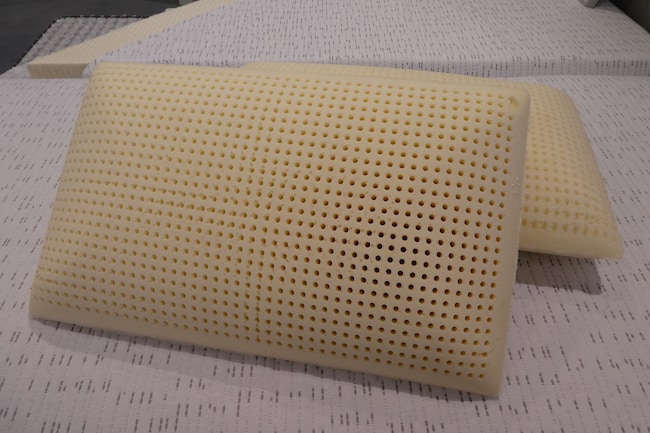
Vita Talalay also is seeing rising demand for pillows. A division of Radium Foam based in Maastricht, Netherlands, Vita Talalay has introduced a line of molded latex pillows now being sold in the United States. The line includes a natural graphite version that provides FR protection.
“The graphite contributes to the FR protection or even eliminates the need for a barrier so that you can feel Vita Talalay latex even closer to the surface,” says Ila Farshad, commercial director. He adds that Vita Talalay has made pillows from block latex in the past but the new line represents the first time the company has offered molded models.
“Pillows are an easy way for a new consumer to experience the benefits of Talalay latex,” he says. “Once they experience it, they feel much more comfortable with the idea of buying a latex mattress.”
Offering an assortment of latex pillows is a “win-win” for retailers, he says, because pillows can be a strong profit center in their own right, while also stimulating mattress purchases. “There are a lot of cross-sale opportunities,” Farshad says. “We have invested heavily in new production equipment to meet the anticipated demand for this new line.”
Vita Talalay has been in the U.S. market for more than 20 years, and the company recently opened a new distribution facility in the Northeast, to augment its existing West Coast facility. “This new facility will enable us to better serve our customers in the East, so they can get the products they need within just a few days of ordering,” Farshad says.
Established in 1932, Radium Foam has been making Vita Talalay since 1961 and introduced its first natural latex products for bedding in 2010. Since then, the company has seen “tremendous growth in all-natural latex,” Farshad says. Today, 75% of the latex it buys for its comfort material is all-natural, and 25% is a blend of natural and synthetic latex.
Until recently, demand for natural latex was driven mostly by consumers looking for “environmentally friendly products with a strong sustainability story,” Farshad says. “But then a second group emerged — consumers who want to sleep on a surface that is natural and not off-gassing any potential toxins. That group — the health seekers — is much bigger than the ‘environmentalists.’ ”
To support its messages to these health seekers, Vita Talalay achieved Cradle to Cradle certification in 2013 for its Natural Vita Talalay line. Cradle to Cradle is a globally recognized measure of “safer, more sustainable products made for the circular economy,” according to the sponsor, the Cradle to Cradle Products Innovation Institute in Oakland, California. To receive certification, products are assessed for health, environmental and social performance across five categories: material health, material reuse, renewable energy and carbon management, water stewardship, and social fairness.
Radium Foam also has received certifications from FSC, the Rainforest Alliance, the eco-INSTITUT and Essent.
“Our commitment to healthier principles is an ongoing journey,” Farshad says. “We’re striving for continuous improvement and total transparency so that when a consumer buys a bed with our comfort material, they know exactly what they are getting — a healthier night’s sleep.”
Charcoal activism
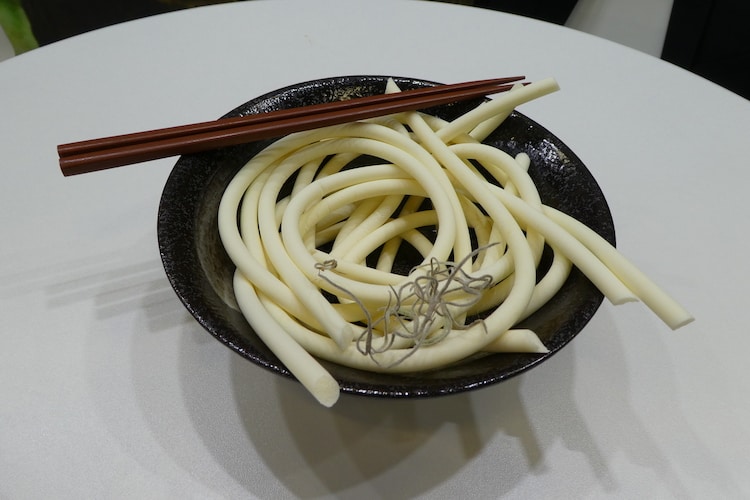
At Interzum Cologne, Lien A, which is based in Ho Chi Minh City, Vietnam, expanded its assortment of 100% natural latex products with a new charcoal latex line. The activated charcoal used for the line is part of the company’s larger sustainability story. The charcoal is derived from Lien A’s waste-to-energy program, in which it burns discarded rice husks from neighboring farms to produce steam and electricity that power production at its three facilities in Vietnam. The company is ISO 14001 certified in the area of sustainability.
The plant-based ash from the rice husks makes a “better, more moisture-absorbing additive than other types of charcoal,” says John Vu Hoang, Lien A international business developer. The charcoal latex is produced by infusing the charcoal into the latex mixture before vulcanization.
This “waste to energy fuels our factory,” adds Vincent Nguyen, Lien A international sales director. And the charcoal latex the company creates from the ash is “cooler, cleaner and fresher,” he says. The charcoal has cooling properties, acts as a deodorizer and also aids with flame retardancy. The new charcoal latex is available for pillows, mattress cores and mattress toppers.
At Interzum Cologne, Lien A also previewed new cinnamon-scented latex pillows that will be launched by the end of the year. The spicy scent masks any odor from the latex, Nguyen says, making it a particularly attractive feature for pillows.
To keep up with growing pillow sales, Lien A has devised extrusion machines for creating “noodle” latex. After extrusion, the latex tubes are chopped up and mixed with kapok fiber — a combination that makes the perfect pillow fill, Nguyen says. He explains that the company has been shredding waste from the latex coring process to use as pillow fill, but that approach has not yielded enough material to keep up with sales.
Lien A executives say the company’s customer base in China is driving most of the increasing demand for its 100% latex products. Latex is relatively new to Chinese consumers, and they are realizing it is an ideal product for sleeping, Nguyen says.
In addition to China, Lien A exports its latex products to more than 40 countries, including Australia, France, Japan, Korea, Switzerland and the United States. The company has offshore warehouses in the United States and the Netherlands.
Since entering the U.S. market five years ago, Lien A has steadily expanded its market share, says Myles Aydelotte, Lien A vice president of business development.
“Latex bedding is a very dynamic segment and new opportunities are emerging all the time,” Aydelotte says. “There’s more innovation, more startups and more differentiation than ever before. Whether it’s latex on latex, latex on coils or latex on (PU) foam, producers are using latex to deliver a superior sleep experience to their customers.”
Lien A emphasizes the all-natural aspects of its latex products. “We only do 100% natural latex,” Aydelotte says. “We don’t offer copper or aluminum versions because if someone applies a cooling agent, it changes the foam and takes away the natural story.”
To differentiate its latex from others in the marketplace, Lien A is working to attain more certifications of the sustainable nature of its products. “Consumers that are shopping for natural products like latex look for and trust these certifications,” Aydelotte says. “They will be an important part of our marketing strategy going forward.”
Vystar builds brand
In addition to marketing its own lines, Lien A has had a strategic partnership since 2017 with Vystar and NHS Holdings, which had been the exclusive U.S. distributor of Vystar’s Vytex natural latex foam to manufacturers for use in more than 200 home furnishings products, including mattresses. In 2018, Vystar acquired the assets of NHS Holdings, setting the stage for Vystar to expand its line to include direct product offerings made from Vytex latex.
Lien A CEO Lam Ngoc Minh holds a significant equity stake in Vystar and is working with the company to expand the market for its allergy-free, environmentally friendly latex products. Lien A is one of Vystar’s primary production partners.
According to Steve Rotman, CEO of Worchester, Massachusetts-based Vystar, Vytex is made from an all-natural raw material with a patented system that removes nonrubber impurities and allergen-causing proteins from raw, liquid latex during the centrifuge stage of processing. Vystar claims its patented process produces the purest natural rubber available. Vytex latex foam is produced overseas, close to the sources of natural latex rubber.
Free of petroleum, volatile organic compounds and harmful chemical agents, Vytex is used in a wide variety of products, from mattress toppers and pillows to yoga mats to condoms and medical gloves.
“Now unified under the Vytex brand, we anticipate developing additional product offerings and solidifying partnerships with multiple major manufacturing partners throughout the home furnishings industry,” Rotman says.
Growing global demand
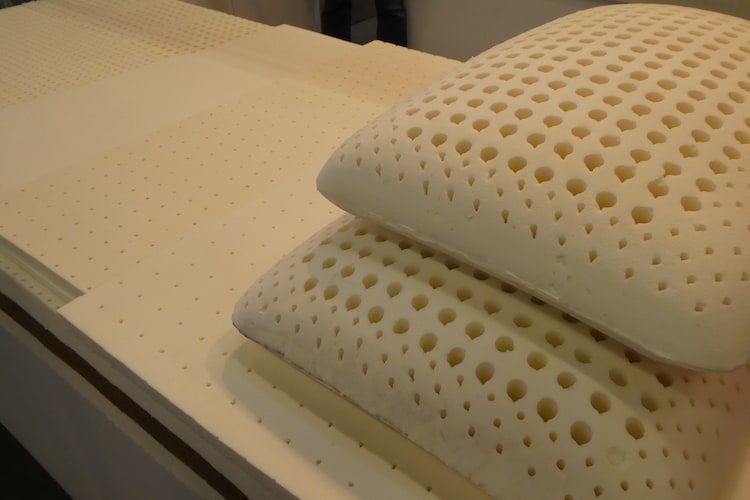
Demand for latex bedding and other sustainable products clearly is growing around the world, says Januka Karunasena, sector CEO for the Arpico division of vertically integrated Richard Pieris Natural Foams Ltd. The company, based in Maharagama, Sri Lanka, produces mattresses and pillows for its domestic market and supplies latex cores, toppers and pillows to foreign markets. “It started in the United States and is now spreading to Europe and Asia. This is the trend we see, and the rest of the world is following,” Karunasena says.
To keep up with demand for its natural latex products, Arpico will open a new plant by April 2020, its second facility in Sri Lanka. The new 200,000-square-foot plant represents a $10 million investment. It will double the company’s production capacity, as well as its workforce, which will grow from 450 to 1,000 people.
Counting the plantations that are owned by sister companies, the Arpico/Richard Pieris group employs more than 15,000 people.
“We’re making a lot of new things for the China market — mostly in pillows,” Karunasena says about current export trends on the latex side of the business. “All-natural latex is now huge there.”
Formerly, there was a big market for synthetic latex in China, but “tastes are changing,” he adds. “There has been explosive growth in the demand for pure, natural latex. Many Chinese latex companies are now converting to 100% natural latex production.”

Shanghai-based Zhulian International Group Co. also has seen increased demand for its products in the past two years, both domestically and in export markets in the Americas, Asia, Australia, Europe and the Middle East, says Nancy Chen, Zhulian business manager.
The company’s 100% natural latex products are much more popular now than in the past, with pillows selling particularly well, according to Chen. Zhulian offers a wide range of pillows, from latex gel and bamboo charcoal latex models to massage pillows, contour pillows and bolsters. It also makes mattresses and toppers. The Zhulian line includes both Talalay and Dunlop foams.
Zhulian operates three manufacturing plants in the Zhejiang and Jiangsu provinces, with five Dunlop assembly lines and 11 Talalay assembly lines. The highly automated facilities produce a total of 30,000 pillows and 8,000 mattresses daily. Zhulian sources the natural latex from southern Thailand.
A deepening commitment
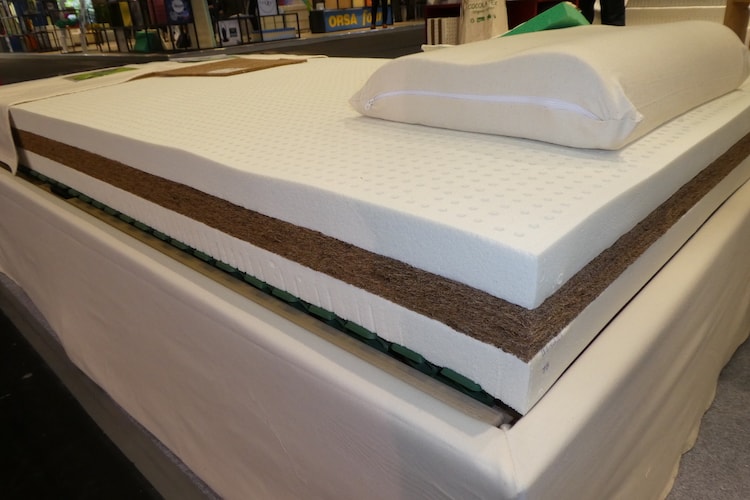
Sustainable business practices are part of Duroflex’s DNA. The 56-year-old Kerala, India-based bed producer, which exports latex and latex-coir sleep products under the Coco-Latex banner, currently is conducting detailed research on its carbon footprint as a first step toward carbon neutral certification. The audit extends from the forest to the factories of its customers, which the company also will encourage to earn certification.
Duroflex no longer uses fossil fuels in its factories and all the water it uses is treated and recycled. Its own plantations are free of chemical fertilizers and pesticides, and other small farmers it works with are encouraged to practice multicrop cultivation and animal husbandry to reduce the pressure of single-crop rubber farming.
“We want our customers to know that, when you buy a mattress from us, you will get that peace of mind (that the product has been made sustainably),” says George Mathew, director of Coco-Latex Exports. “We are committed to the conservation of nature. We exclusively use pure, natural latex to produce 100% eco-friendly mattresses. Our green principles have been promoted to and accepted by farmers across the ‘rubber belt.’ ”
Coco-Latex’s line features certified latex, as well as certified wool and certified organic cotton covers. The company works with Control Union Certifications, an international auditing company, to achieve its certifications, and uses natural and environmentally friendly raw materials wherever possible. It also employs modern production processes with an emphasis on minimum waste and pollution.
Many of the company’s models combine latex and coir (coconut fiber sprayed with natural latex). The latex-coir combinations are selling particularly well in Europe, Mathew says. Coconut fiber also is growing more popular for use in crib mattresses, he adds.
The company’s export markets include the Americas, Australia, China, Europe, Japan, Korea, the Middle East, Nepal, New Zealand and South Africa. Its export line includes Aeron — 100% rubber latex foam components — as well as completely finished latex mattresses and pillows.
Cost-cutting innovation
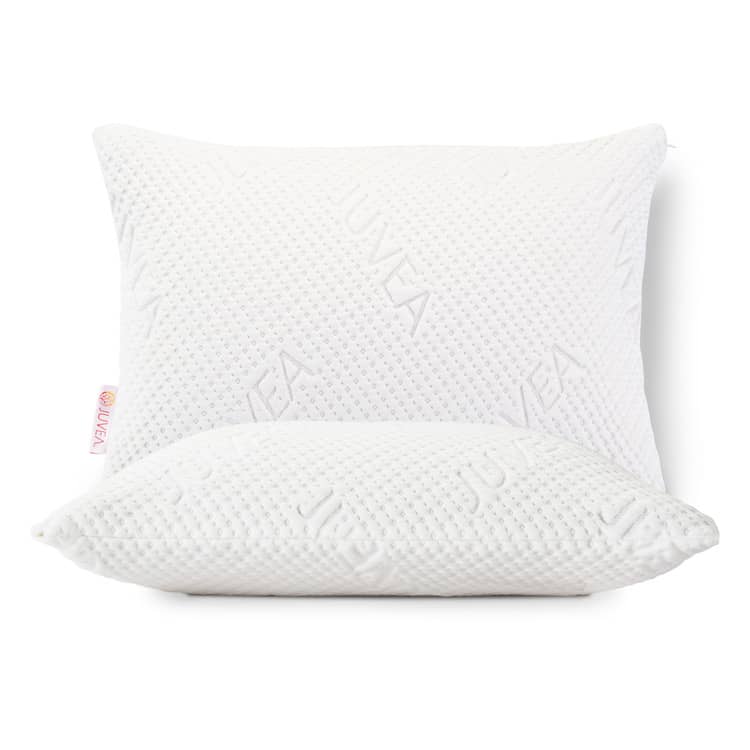
Responding to more intense competition in the entry level of the market, Shelton, Connecticut-based Talalay Global introduced a new type of latex comfort layer called Talalay Echo at the Summer Las Vegas Market. The product, targeted to producers of price-sensitive roll-packed bedding, as well as hybrids, incorporates fabrication cuts — foam pieces that are left over when foam cores need to be trimmed to size. These pieces are pulverized into a fine powder that is then combined with liquid latex during the Talalay production process to create 1 ½-inch comfort layers. Talalay Echo offers the pressure relief, durability and breathability typically associated with Talalay latex at a price point that is as much as 25% less than a traditional Talalay product, says Marc Navarre, Talalay Global CEO.
“Our new manufacturing technology allows mattress producers to offer the benefits of Talalay latex without the higher costs,” Navarre says. “Plus, it’s an environmentally friendly process because it makes use of our fabrication cuttings. It will be especially useful for boxed bed products, where component costs have to be monitored so closely.”
Navarre says Talalay Echo will be used most often as the top comfort layer, immediately under the quilting. However, it also could be sewn into the top of the mattress as part of a pillow-top construction.
In August, Talalay Global’s corporate entity — Latex Foam International — filed for Chapter 11 bankruptcy protection, citing market disruption caused by growth in the low-end mattress segment. Pure Talalay Bliss, the marketing brand for the company’s finished mattress business, also was part of the filing.
In a statement, the company said it filed for protection to restructure the business “to better service its customers, work with its vendors and provide for its employees.” The company aims to exit the Chapter 11 process expeditiously, according to the statement.
“The challenges facing the mattress industry today are well-documented and have impacted all of us in the bedding category,” Navarre said at the time of the filing. “Chapter 11 was sought by our management team and board as part of a strategic plan that gives us the opportunity to restructure our balance sheet and position the company for future success.”
In the past year, Talalay Global has introduced several products aimed at strengthening its market position. They include EverCloud Plus, a proprietary latex product to be used in the quilting layer of a mattress. EverCloud Plus is softer and more elastic than previous EverCloud formulations, making it easier to process through quilting machines, according to the company.
“Our new EverCloud Plus is backed by our science-based design strategy and provides manufacturers with a product that is not only easier to work with, but also offers enhanced strength,” Navarre says. “In developing the new formula, our team created a much softer feel and a thinner profile, giving manufacturers the ability to incorporate it into the quilting layer of mattresses, where consumers will feel the benefits of latex immediately.”
Last summer, Talalay Global launched a latex pillow line in partnership with Amazon. Called Juvea, the line features six pillow designs available in three comfort levels, including models developed specifically for stomach and side sleepers. The line is sold through the Amazon Prime program with two-day delivery.
“We chose Amazon for the launch because it is a great platform to secure mass market awareness for a new product,” Navarre says.
With brand awareness growing, the next phase of distribution for Juvea will be with other retailers. The Juvea brand was developed to help the company’s retail customers increase their average ticket when making a mattress or bedroom furniture sale, or by selling the pillows as a standalone item.
“The latex pillow market has been significantly underserved,” Navarre says. “Our research shows that only 14% of consumers buy latex pillows, but 82% of them recommend those pillows to others. That indicates a major opportunity for us and our retail partners.”
In other news, Maureen Coffey has rejoined Talalay Global in the newly created position of director of international sales. Coffey, whose father, Bill Coffey, founded Latex Foam Products — the predecessor to Talalay Global — in 1975, worked for the company for 25 years in a variety of sales and customer service posts before leaving in 2012.
Coffey’s new responsibilities include international OEM sales and OEM pillow sales in the United States and abroad. She also is Talalay Global’s liaison with Eclipse International, which produces the Pure Talalay Bliss line as part of a strategic partnership agreement signed in 2018.
LATEX RESOURCES
To find latex producers and latex bedding components, check the BedTimes Supplies Guide, printed annually in the December issue of BedTimes and also available online.






